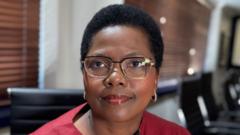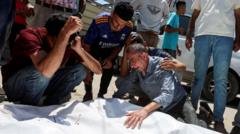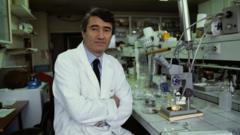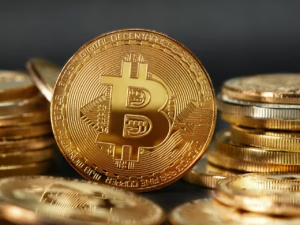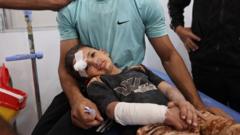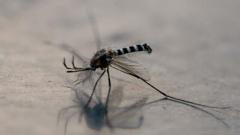The treaty will foster rapid data sharing, improve access to essential medical supplies, and ensure equitable distribution of treatments and vaccines during future pandemics.
**WHO Secures Historic Legally Binding Treaty for Future Pandemic Preparedness**
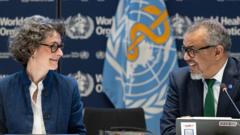
**WHO Secures Historic Legally Binding Treaty for Future Pandemic Preparedness**
A pivotal agreement among WHO member states aims to enhance global collaboration and resource management during health crises.
The World Health Organization (WHO) has successfully reached a landmark agreement on a legally binding treaty dedicated to better preparedness for future pandemics. Following three years of negotiations, the text of the treaty was finalized, aiming to prevent the disarray and intense competition for medical resources that characterized the COVID-19 pandemic.
Key provisions include rapid sharing of information regarding new diseases to facilitate faster development of treatments and vaccines by scientists and pharmaceutical companies. For the first time, the WHO will also have oversight of global supply chains for essential personal protective equipment (PPE), such as masks and medical gowns.
WHO Director-General, Dr. Tedros Adhanom Ghebreyesus, hailed the treaty as "a significant milestone in our shared journey towards a safer world," emphasizing that it showcased effective multilateralism in addressing shared global threats amidst current geopolitical divides.
Marked as a historic agreement, this treaty, reached in early discussions, is only the second such accord in the 75-year existence of the WHO, the first being the tobacco control agreement forged in 2003. The final approval from member states is anticipated at the upcoming World Health Assembly next month. However, it's notable that U.S. negotiators did not partake in the final stages of the discussions, thanks to former President Trump’s withdrawal from the WHO, meaning the U.S. will not be bound by this treaty when it officially exits in 2026.
Under the terms of the pact, nations are mandated to ensure the worldwide availability of pandemic-related medications during an outbreak. Pharmaceutical manufacturers engaged in this treaty must allocate 20% of their production of vaccines, therapeutics, and diagnostics to the WHO, with at least 10% to be supplied as donations, while the remainder should be made available at affordable prices.
The agreement includes a mechanism for the transfer of health technologies to developing countries, contingent on mutual agreement, aiming to bolster local capabilities for producing vaccines and medicines. This particular clause has been contentious, with developing nations expressing frustration over the previous vaccine hoarding by wealthier states during the pandemic. Concurrently, countries with robust pharmaceutical sectors have raised concerns that mandatory transfers could hinder future research and development.
Central to the agreement is the introduction of a Pathogen Access and Benefit-Sharing System (PABS), designed to streamline data exchange among pharmaceutical firms. This approach is forecasted to expedite the development of new pharmaceuticals in response to potential public health crises in the future.
Key provisions include rapid sharing of information regarding new diseases to facilitate faster development of treatments and vaccines by scientists and pharmaceutical companies. For the first time, the WHO will also have oversight of global supply chains for essential personal protective equipment (PPE), such as masks and medical gowns.
WHO Director-General, Dr. Tedros Adhanom Ghebreyesus, hailed the treaty as "a significant milestone in our shared journey towards a safer world," emphasizing that it showcased effective multilateralism in addressing shared global threats amidst current geopolitical divides.
Marked as a historic agreement, this treaty, reached in early discussions, is only the second such accord in the 75-year existence of the WHO, the first being the tobacco control agreement forged in 2003. The final approval from member states is anticipated at the upcoming World Health Assembly next month. However, it's notable that U.S. negotiators did not partake in the final stages of the discussions, thanks to former President Trump’s withdrawal from the WHO, meaning the U.S. will not be bound by this treaty when it officially exits in 2026.
Under the terms of the pact, nations are mandated to ensure the worldwide availability of pandemic-related medications during an outbreak. Pharmaceutical manufacturers engaged in this treaty must allocate 20% of their production of vaccines, therapeutics, and diagnostics to the WHO, with at least 10% to be supplied as donations, while the remainder should be made available at affordable prices.
The agreement includes a mechanism for the transfer of health technologies to developing countries, contingent on mutual agreement, aiming to bolster local capabilities for producing vaccines and medicines. This particular clause has been contentious, with developing nations expressing frustration over the previous vaccine hoarding by wealthier states during the pandemic. Concurrently, countries with robust pharmaceutical sectors have raised concerns that mandatory transfers could hinder future research and development.
Central to the agreement is the introduction of a Pathogen Access and Benefit-Sharing System (PABS), designed to streamline data exchange among pharmaceutical firms. This approach is forecasted to expedite the development of new pharmaceuticals in response to potential public health crises in the future.

